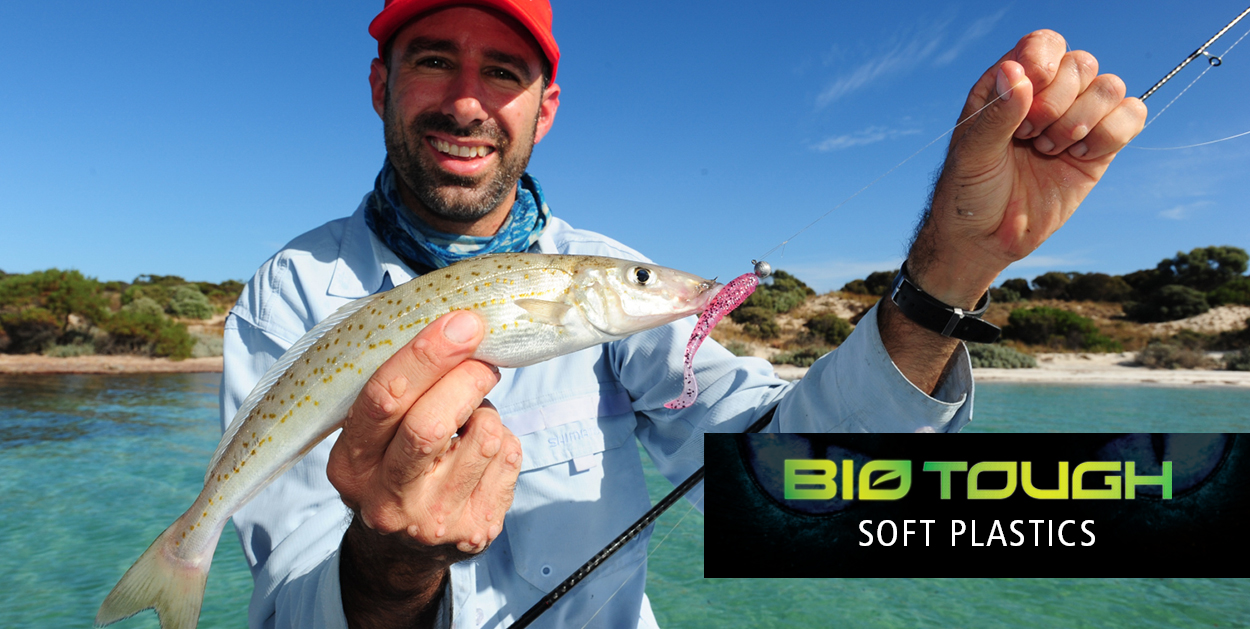
The rise of soft plastics in the marketplace many moons ago revolutionised the way we targeted many of popular recreational species. It’s unusual not to see a packet or two of soft plastics in the arsenal of fisho’s chasing bream, flathead, snapper and even barra to name just a few. And we are certainly spoilt for choice with a range of soft plastics in various sizes, styles and colour schemes to suit just about any situation and species of fish.
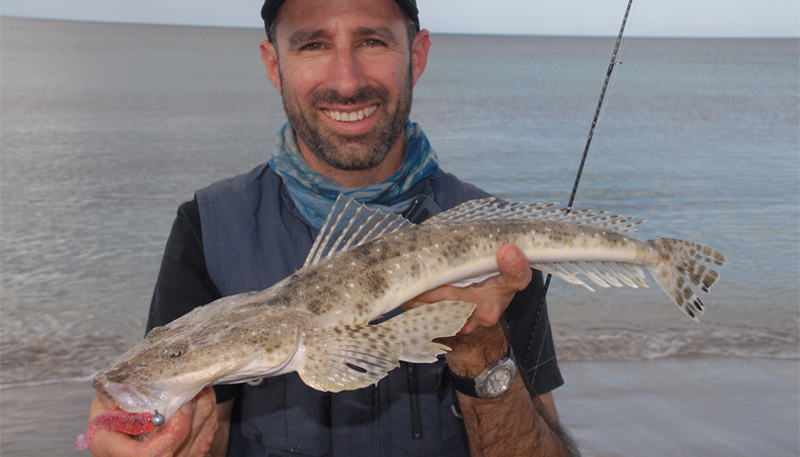
The main downside to fishing with soft plastics has been their longevity, both in and out of the water. Some plastics are known to dry out and go stiff once the packet has been opened, and others would simply split in half after a decent bite. Species of fish with any sort of teeth would rip through plastic tails without due care, and before you know it, you’ve burnt through multiple packs of plastics in the single session. That’s all changed now…
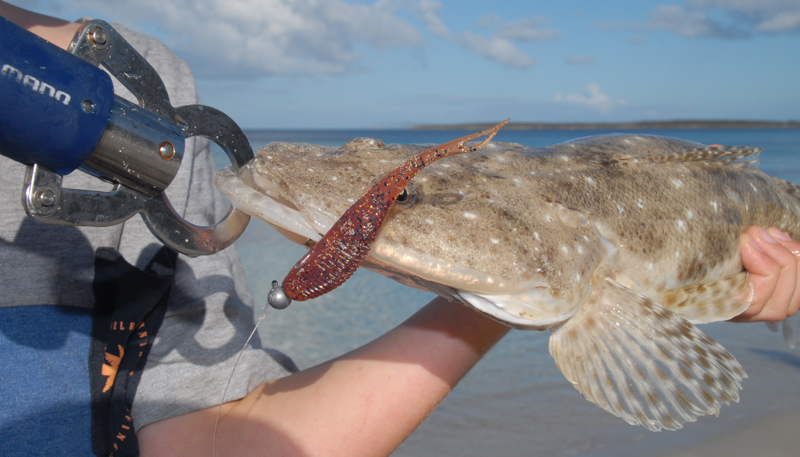
The introduction of Squidgies Bio Tough soft plastics in the market last season has been a revolution to our soft plastic fishing down here in SA. Like any new product, I like to use the item for a period of time and put them through their paces before promoting them and recommending them to others. I’ve been using the Bio Tough soft plastics for over 12 months now, and am genuinely impressed with the durability, as well as their fish catching ability.
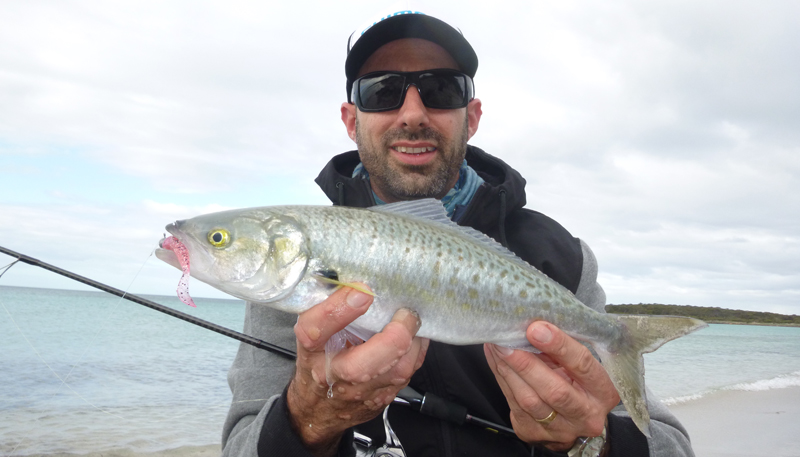
Bio Tough plastics, as their name suggests, are a soft plastic constructed of super-tough materials to offer a lure that lasts a lot longer than traditional soft plastics. The new Bio Tough range are constructed with a synthetic bioplastic offering a minimum of 50% biodegradability while still maintaining UV visibility. The first time you use a Bio Tough soft plastic, you realise just how strong and stretchy the material is when you’re threading the jig-head hook through the body of the plastic.
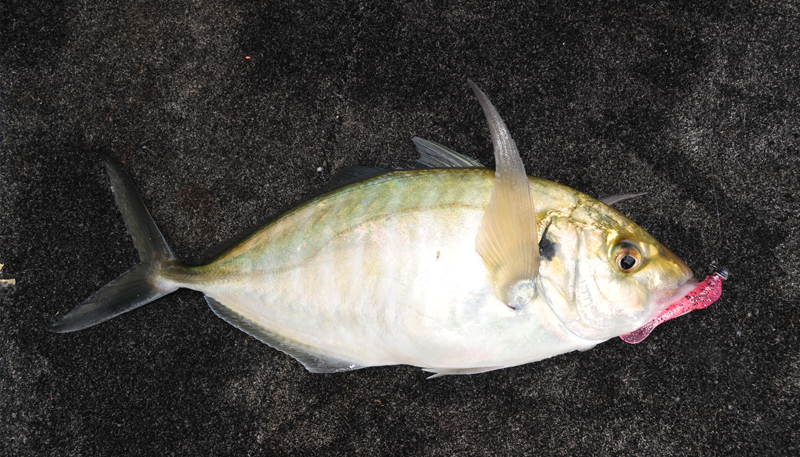
I had a session just last week with my wife and kids in our local national park. We were walking along a calm sandy beach, casting soft plastics around clusters of rock along the shallow shoreline. My youngest son Finn persevered with a traditional Fish style soft plastic; his go-to lure, while the rest of us were casting 100mm Bio Tough soft plastics in Flick Bait and Fish profiles.
We caught 6 nice flathead for the session, along with around 20 other fish of various species (herring, juvenile salmon and red mullet). Finn went through about 6 or 7 traditional tails in our two-hour session, while those of us using the Bio Tough finished the session with the original tail we started with – amazing. One packet of Bio Tough plastics has been lasting me two or three sessions on average.
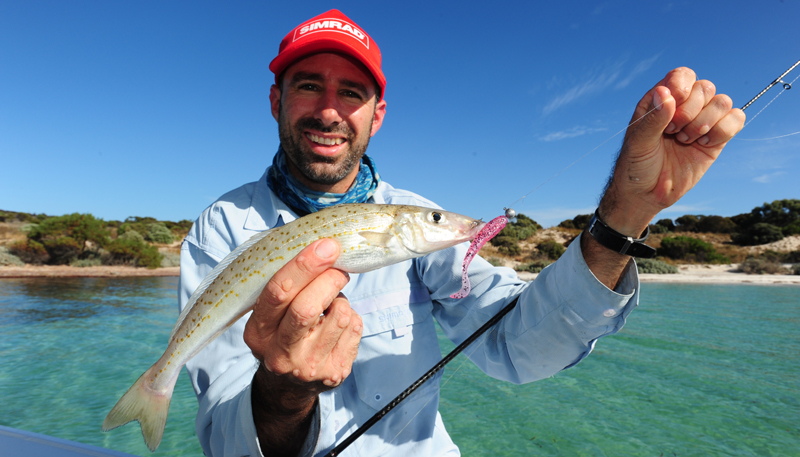
I’ve been using the smaller 70mm and 75mm Bio Tough Fish and Flick Baits on some of our smaller targets such as silver trevally, King George whiting, herring, snook and smaller salmon, while I’ve been using the larger 100mm Bio Tough Fish and 120mm Wriggler for our southern bluespot flathead and larger salmon.
For our southern species, the cracked pepper, pink glitz and pumpkin seed have been our most reliable colour schemes. There is a total of six colours offered in the three plastic styles; Bio Tough Fish, Flick Bait and Wriggler.
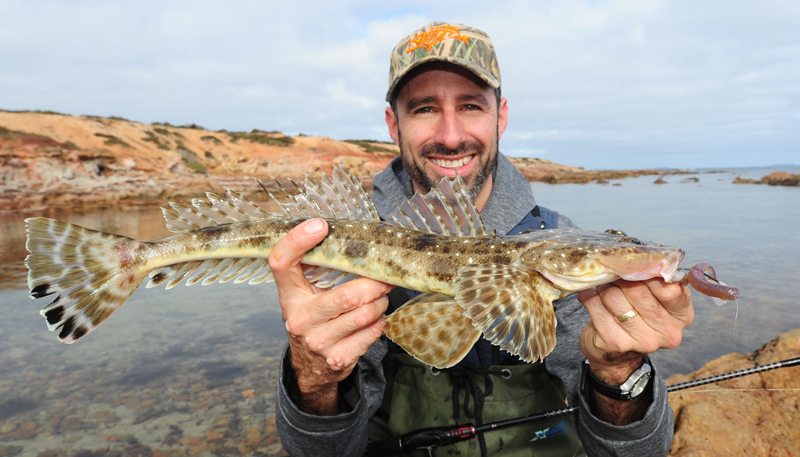
The durability of the plastic certainly hasn’t altered the action of the plastic, with the soft material offering plenty of movement underwater. I’ve still been smearing traditional S-Factor to the new Bio Tough range, and the scent seems to hold in the ribbed-belly quite well.
I’m yet to use the Bio Tough range on some of our larger reef species and offshore targets, but as an all-round inshore plastic, the Bio Tough plastics have proven to be a great option down south.